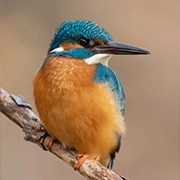Plants in Darkness

Have you ever wondered how plants can survive without sunlight? It's a fascinating topic, and the truth is, there are a number of plant species that have adapted to living in complete darkness.
Whether they're in the deep, dark forests or underground, these resilient plants are a testament to the wonders of nature. Today, we're diving into the world of plants that grow in the dark, exploring how they manage to thrive in such unusual conditions.
Let's see how these plants defy the odds!
Why Some Plants Can Thrive in the Dark
At first glance, it seems almost impossible that any plant could grow without light. After all, most plants rely on sunlight for photosynthesis, the process that allows them to convert light into energy. However, some plants have evolved in environments where light is scarce, such as caves, deep forests, or dense canopies. These plants have adapted by relying on other mechanisms to get their nutrients.
For instance, some plants can use the limited light that filters through the canopy of dense forests, while others have developed alternative strategies to survive in complete darkness, such as parasitism or storing energy in their roots.
1. The Ghost Plant (Monotropa uniflora)
One of the most fascinating plants that grows without light is the ghost plant, also known as Monotropa uniflora. This unusual plant is often found in dark, shady forests and has a ghostly white appearance. What makes it stand out is its lack of chlorophyll – the pigment responsible for photosynthesis.
Instead of producing its own energy through sunlight, the ghost plant is a parasite. It feeds off the roots of nearby trees, drawing nutrients from fungi that are in a symbiotic relationship with the trees. Despite its lack of photosynthesis, the ghost plant still manages to survive and even bloom in dark, damp forest environments.
2. The Corpse Flower (Amorphophallus titanum)
While not necessarily growing in complete darkness, the corpse flower (Amorphophallus titanum) deserves a mention. Known for its enormous size and strong odor (which smells like rotting flesh), the corpse flower thrives in the dimly lit forests of Sumatra, Indonesia. It grows in low-light conditions and only blooms once every few years, attracting pollinators with its pungent scent rather than color.
What makes the corpse flower particularly interesting is its ability to produce heat, a mechanism it uses to help disperse its scent over a larger area, ensuring that pollinators like carrion beetles can find it. It's an excellent example of how plants can adapt to dark, shaded environments with unique features.
3. The Devil's Backbone (Orostachys spinosa)
Another fascinating plant that thrives in low light is the devil's backbone (Orostachys spinosa). This succulent plant grows in rocky, dry environments with minimal light, such as caves and crevices. The devil's backbone is able to survive in such conditions due to its ability to store water in its fleshy leaves, making it highly drought-resistant.
Unlike most plants, it doesn't require consistent sunlight to photosynthesize. Instead, it uses its stored nutrients and water to survive long periods without light. The devil's backbone is a beautiful and resilient plant that shows how nature has adapted to even the harshest conditions.

4. The Blind Cave Fish Plant (Astyanax mexicanus)
This is a unique example of a plant and animal relationship. The Astyanax mexicanus is a species of fish that has adapted to life in total darkness in underground caves. It's been known to coexist with certain types of plants that also thrive in these low-light environments. These plants rely on alternative forms of energy, such as nutrient-rich water that percolates through the rocks.
Though plants in these underground environments are typically not known for being highly visible or vibrant, they continue to survive and reproduce in total darkness. This unusual habitat provides us with a glimpse into the complexity of life in the absence of sunlight.
5. The Cave Orchid (Epipogium aphyllum)
Found in the caves of Central and Eastern Europe, the cave orchid (Epipogium aphyllum) is another example of a plant that has adapted to low-light conditions. This orchid doesn't have chlorophyll, so it cannot photosynthesize. Instead, it survives by parasitizing the roots of trees and drawing nutrients from the surrounding environment.
These orchids grow in deep, shaded caves where light barely reaches. They depend on underground fungi to provide essential nutrients. Despite their lack of sunlight, cave orchids continue to flower, albeit only for a short period during the warmer months. Their ability to adapt to such low-light conditions makes them a marvel of evolution.
The Fascination of Dark-Growing Plants
Exploring plants that thrive in the dark is an exciting adventure. These plants show us how life can adapt to the most extreme conditions. They've evolved fascinating survival mechanisms, from parasitism and symbiosis to water storage and nutrient sharing, that allow them to flourish without light.
As we continue to study these remarkable species, we uncover new layers of nature's resilience and adaptability. It's amazing to think about the hidden ecosystems of the world where light is scarce but life is abundant.
Takeaway: Nature's Wonders in Darkness
Next time you find yourself in a dimly lit forest, or perhaps even in a cave, take a moment to appreciate the hidden life around you. There are entire ecosystems of plants that have learned to live without sunlight, defying what we once thought was necessary for survival. Nature has an incredible way of adapting to the harshest environments.
Have you come across any dark-growing plants in your own garden or travels? We'd love to hear about them! Let us know in the comments and share your plant discoveries with us!

 · Plant Team
· Plant Team